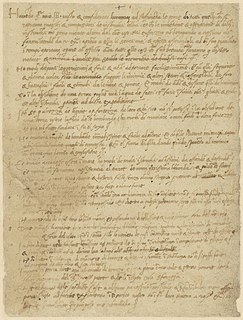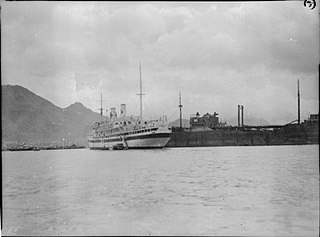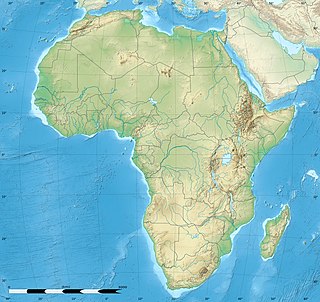A number of steamships have been named Leonardo da Vinci, including:
A number of steamships have been named Leonardo da Vinci, including:

Leonardo di ser Piero da Vinci was an Italian polymath of the High Renaissance who was active as a painter, draughtsman, engineer, scientist, theorist, sculptor and architect. While his fame initially rested on his achievements as a painter, he also became known for his notebooks, in which he made drawings and notes on a variety of subjects, including anatomy, astronomy, botany, cartography, painting, and paleontology. Leonardo's genius epitomized the Renaissance humanist ideal, and his collective works compose a contribution to later generations of artists matched only by that of his younger contemporary, Michelangelo.

Leonardo is a masculine given name, the Italian, Spanish, and Portuguese equivalent of the English, German, and Dutch name, Leonard.
Vinci may refer to:

SS Cristoforo Colombo was an Italian ocean liner built in the 1950s, sister ship of the SS Andrea Doria.

Leonardo da Vinci was an Italian Renaissance painter and polymath who achieved legendary fame and iconic status within his own lifetime. His renown primarily rests upon his brilliant achievements as a painter, the Mona Lisa and The Last Supper, being two of the most famous artworks ever created, but also upon his diverse skills as a scientist and inventor. He became so highly valued during his lifetime that the King of France bore him home like a trophy of war, supported him in his old age and, according to legend, cradled his head as he died.
Leonardo da Vinci (1452–1519) was an Italian Renaissance polymath.

The Italian polymath Leonardo da Vinci (1452–1519) left thousands of pages of writings and drawings, but rarely made any references to his personal life. The resulting uncertainty, combined with mythologized anecdotes from his lifetime, has resulted in much speculation and interest in Leonardo's personal life. Particularly, his personal relationships, sexuality, philosophy, religion, vegetarianism, left-handedness and appearance.

Leonardo da Vinci (1452–1519) was an Italian polymath, regarded as the epitome of the "Renaissance Man", displaying skills in numerous diverse areas of study. Whilst most famous for his paintings such as the Mona Lisa and the Last Supper, Leonardo is also renowned in the fields of civil engineering, chemistry, geology, geometry, hydrodynamics, mathematics, mechanical engineering, optics, physics, pyrotechnics, and zoology.
Leonardo is a masculine given name.

SS Leonardo da Vinci was an ocean liner built in 1960 by Ansaldo Shipyards, Italy for the Italian Line as a replacement for their SS Andrea Doria that had been lost in 1956. She was initially used in transatlantic service alongside SS Cristoforo Colombo, and primarily for cruising after the delivery of the new SS Michelangelo and SS Raffaello in 1965. In 1976 the Leonardo da Vinci became the last Italian Line passenger liner to be used in service across the North Atlantic. Between 1977 and 1978 she was used as a cruise ship by Italia Crociere, but was laid up from 1978 onwards until 1982 when she was scrapped.

Leonardo's Horse is a sculpture that was commissioned of Leonardo da Vinci in 1482 by Duke of Milan Ludovico il Moro, but not completed. It was intended to be the largest equestrian statue in the world, a monument to the duke's father Francesco Sforza. Leonardo did extensive preparatory work for it but produced only a clay model, which was later destroyed.

RFA Maine was a 7,432 GRT hospital ship which was built in 1924 as the ocean liner Leonardo da Vinci by SA Ansaldo, La Spezia, Italy for the Società di Navigazione Transatlantica Italiana. In 1941, she was captured by the British at Kismayu, Italian Somaliland. Declared a prize of war, she was passed to the Ministry of War Transport (MoWT) and renamed Empire Clyde, serving as a hospital ship for the British Army during the Second World War. In 1948, ownership was passed to the Admiralty and she entered service with the Royal Fleet Auxiliary as RFA Maine. She served during the Korean War and was scrapped in 1954.

Leonardo da Vinci was a Marconi-class submarine of the Italian navy during World War II. It operated in the Atlantic from September 1940 until its loss in May 1943, and became the top scoring non-German submarine of the entire war.

SS Lulworth Hill was a British cargo ship completed by William Hamilton & Co in Port Glasgow on the Firth of Clyde in 1940. Lulworth Hill had a single 520 NHP triple-expansion steam engine driving a single screw. She had eight corrugated furnaces heating two 225 lbf/in2 single-ended boilers with a combined heating surface of 7,643 square feet (710 m2), plus one auxiliary boiler.
Liceo Leonardo da Vinci may refer to:
Istituto Leonardo da Vinci or Istituto di Istruzione Superiore Leonardo da Vinci may refer to:
Leonardo da Vinci School may refer to:
Leonardo da Vinci (1452–1519) was an Italian Renaissance polymath.
Leonardo da Vinci this name has been borne by at least four ships of the Italian Navy and may refer to: